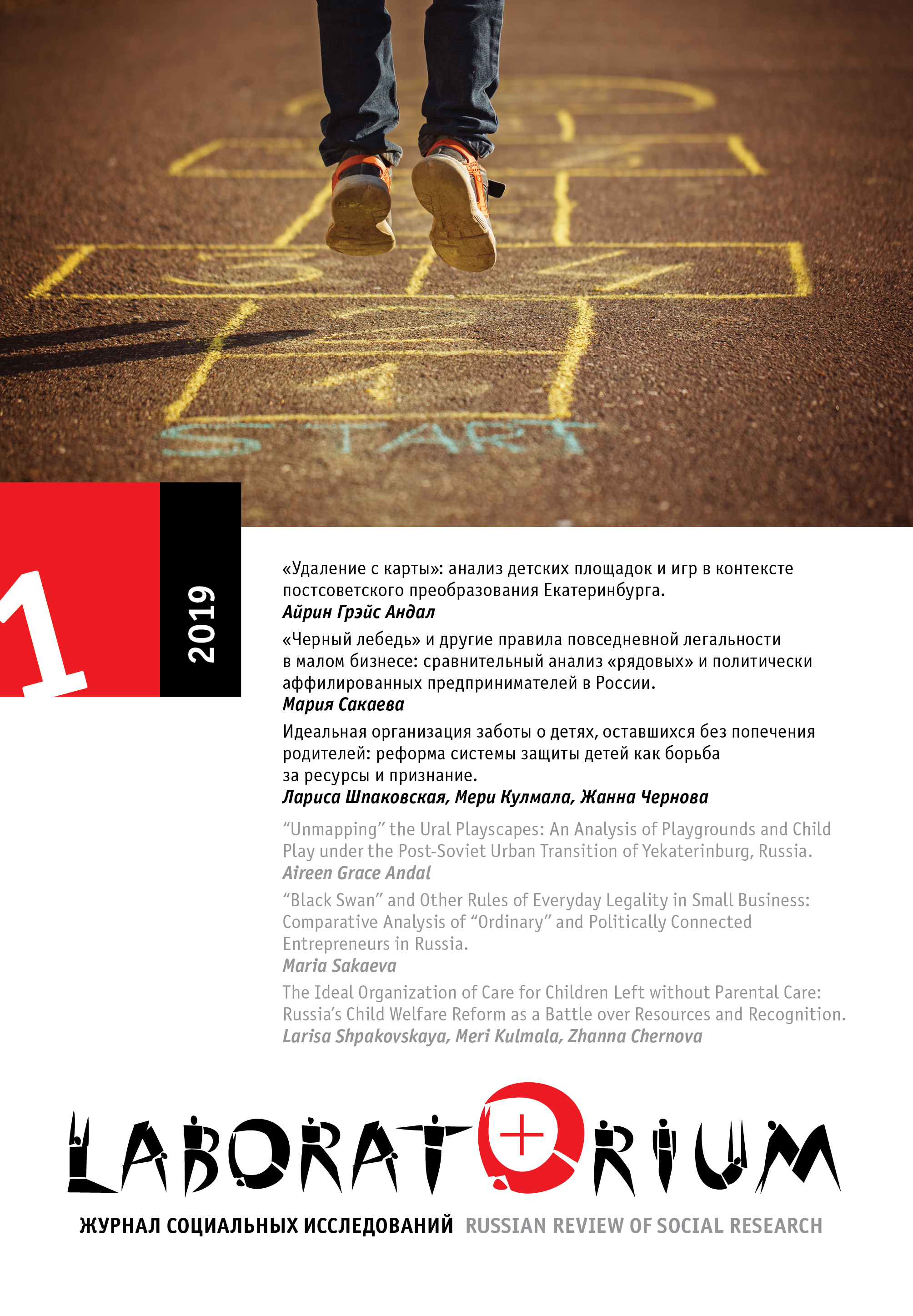The Ideal Organization of Care for Children Left without Parental Care: Russia’s Child Welfare Reform as a Battle over Resources and Recognition
Main Article Content
Abstract
Russia is undergoing a reform of its child welfare system. The general aim of the reform is deinstitutionalization. This implies fundamental changes at the ideological and institutional levels to redesign the system of residential care for children left without parental care and to develop a system of family placement. Based on expert interviews, the article examines the institutional logic of the reform implementation, presenting expert opinions on how care should be organized for children left without parental care in terms of ideals of care, as well as institutional structure (location of care, agents involved in care, and resources available to those agents). As a theoretical framework we use the neoinstitutional approach, in particular, the theory of social learning and the strategic interaction approach. The article identifies main players in the reform arena (state residential institutions, NGO s, and foster families), as well as the discursive strategies they use to legitimize their role, action strategies, their ideas about children’s well-being, and ideas about how childcare should ideally be arranged. We identify three competing ideal care models: paternalistic, quasi-liberal, and familial. These models present paradigmatic directions of deinstitutionalization of care for children left without parental care, resulting from the current reforms the child welfare system.
Article in Russian
DOI: 10.25285/2078-1938-2019-11-1-57-81
Keywords
Care, Children Left without Parental Care, Deinstitutionalization, Social Policy
Abstract 215 | PDF (Русский) Downloads 159

